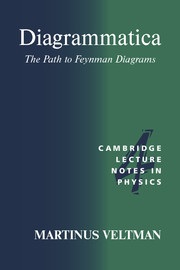Book contents
- Frontmatter
- Contents
- Introduction
- 1 Lorentz and Poincaré Invariance
- 2 Relativistic Quantum Mechanics of Free Particles
- 3 Interacting Fields
- 4 Particles with Spin
- 5 Explorations
- 6 Renormalization
- 7 Massive and Massless Vector Fields
- 8 Unitarity
- 9 Quantum Electrodynamics: Finally
- Appendix A Complex Spaces, Matrices, CBH Equation
- Appendix B Traces
- Appendix C Dimensional Regularization
- Appendix D Summary. Combinatorial Factors
- Appendix E Standard Model
- Appendix F Metric and Conventions
- Index
7 - Massive and Massless Vector Fields
Published online by Cambridge University Press: 01 June 2011
- Frontmatter
- Contents
- Introduction
- 1 Lorentz and Poincaré Invariance
- 2 Relativistic Quantum Mechanics of Free Particles
- 3 Interacting Fields
- 4 Particles with Spin
- 5 Explorations
- 6 Renormalization
- 7 Massive and Massless Vector Fields
- 8 Unitarity
- 9 Quantum Electrodynamics: Finally
- Appendix A Complex Spaces, Matrices, CBH Equation
- Appendix B Traces
- Appendix C Dimensional Regularization
- Appendix D Summary. Combinatorial Factors
- Appendix E Standard Model
- Appendix F Metric and Conventions
- Index
Summary
Subsidiary Condition Massive Vector Fields
The electromagnetic field, classically, is a vector field. It is however not obvious that therefore the quantum field, constructed as we did, must be a vector field. In the end that comes out anyway, but let us make the situation clear.
We can freely use scalar fields, vector fields, spinor fields, as long as the theory gives rise to results agreeing with the observed data. One of the required properties is Lorentz invariance, and we must take care that Lorentz invariance is maintained. Our classification in terms of the fields mentioned is really done that way to keep this invariance transparent. We must know precisely how the fields behave under Lorentz transformations, and then we can make them interact such that the invariance is maintained.
The choice as to what kind of field describes an observed particle is really a matter of choice: try what type of field describes best the observed data. So, to anyone criticising the use of a vector field to describe photons one can simply answer: this works well.
Part of the observed phenomena is that there are two kinds of photons, thus two degrees of freedom (polarizations). The photon is presumably massless. The massive vector bosons of weak interactions have three degrees of freedom. The problem arises to construct a set of fields such that there are two (three) degrees of freedom, and such that the fields transform under Lorentz transformations in the proper way.
Information
- Type
- Chapter
- Information
- DiagrammaticaThe Path to Feynman Diagrams, pp. 169 - 182Publisher: Cambridge University PressPrint publication year: 1994
